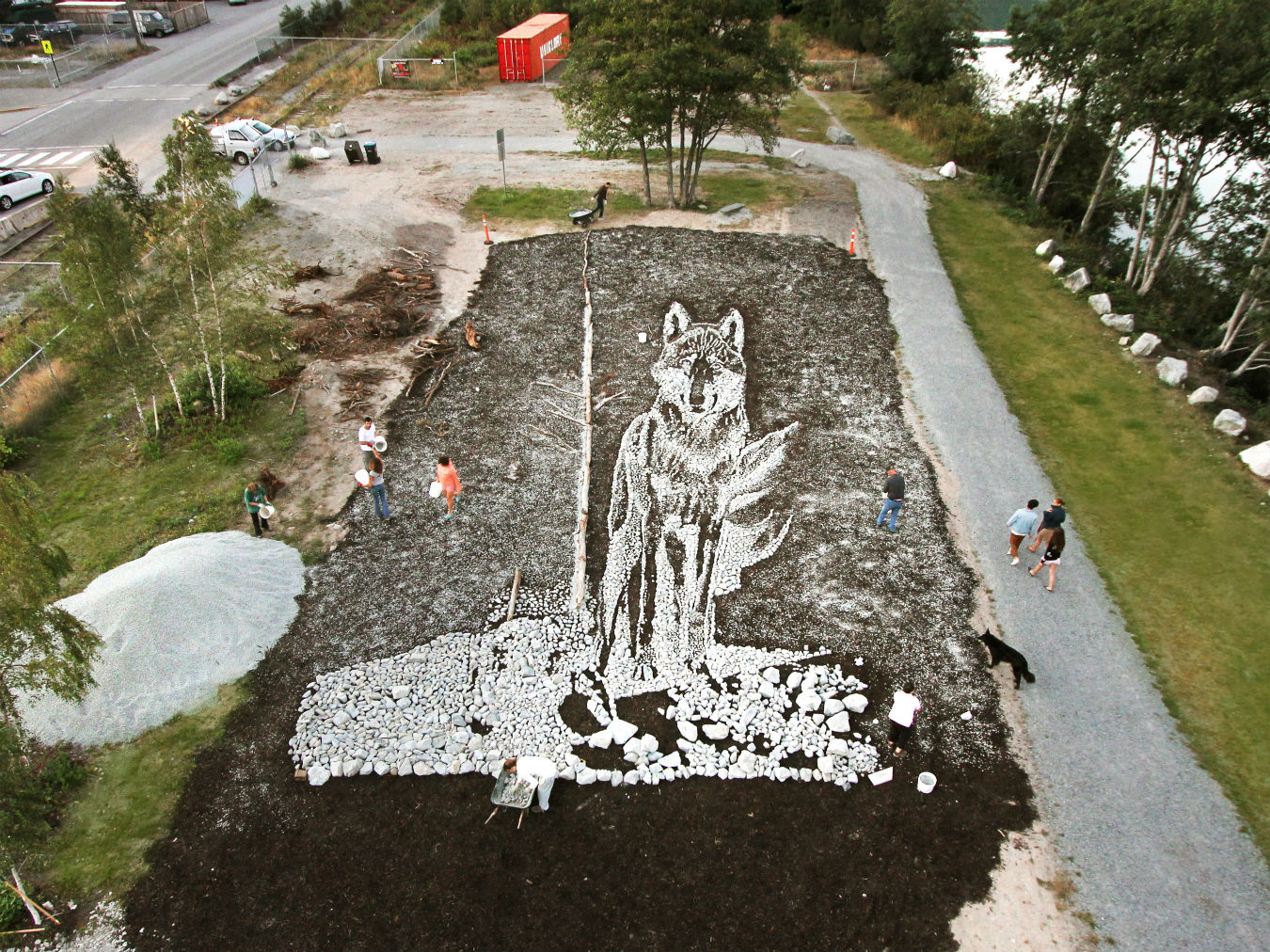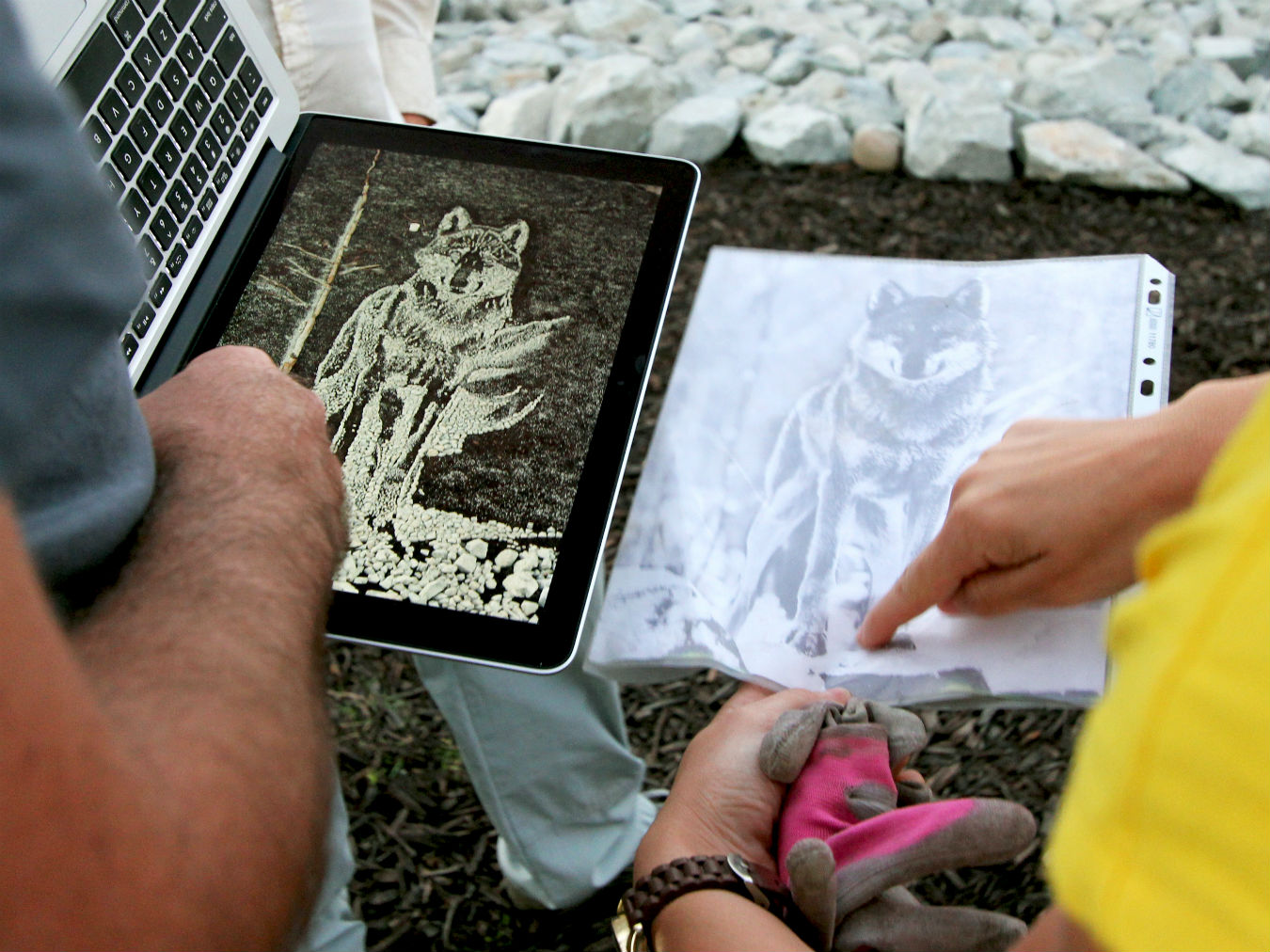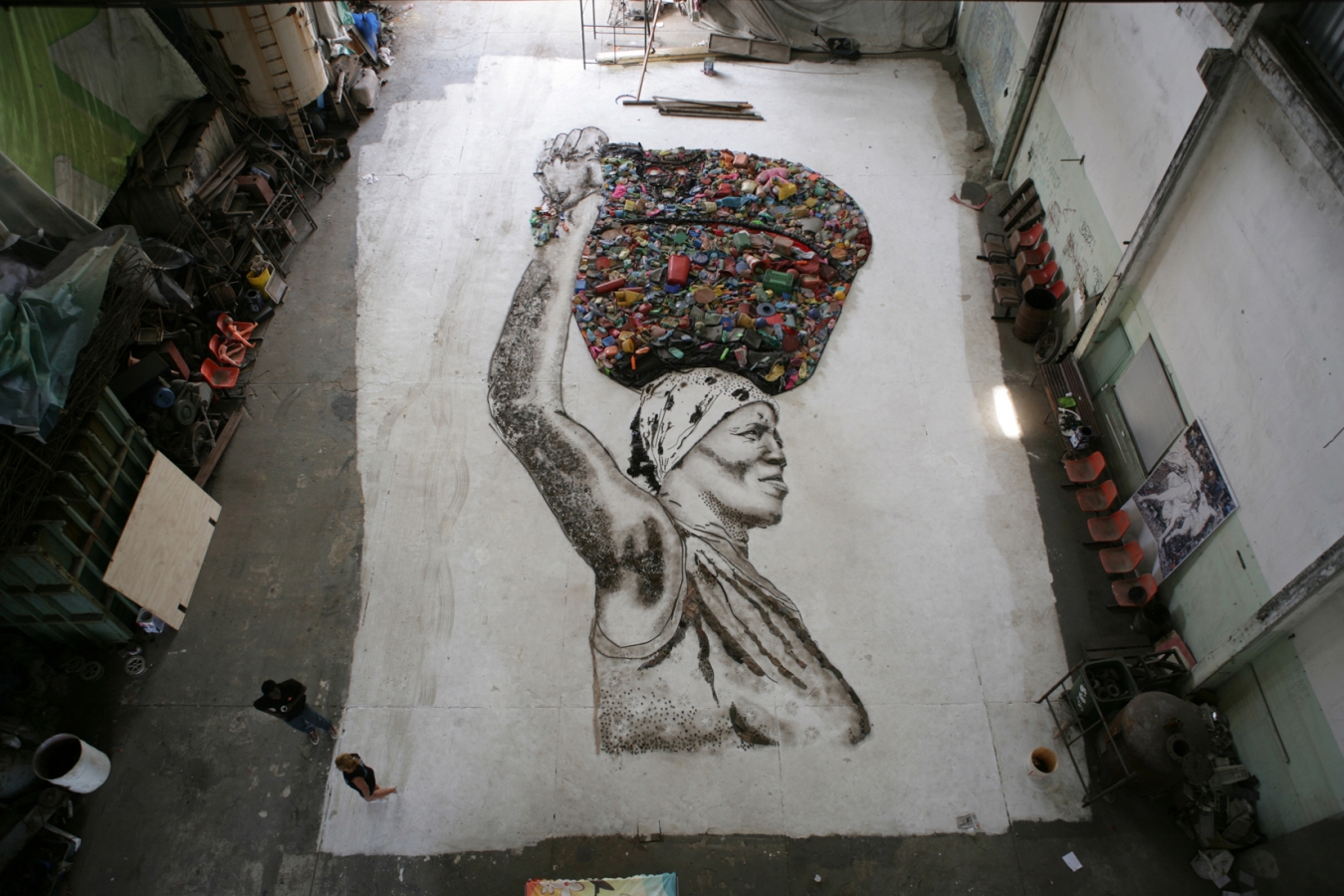“There’s a moment when something changes: before a basketball hits the hoop, before a first kiss. I am fascinated by this moment,” says multi-disciplinary artist Vik Muniz. “This moment is transformation. That’s what art is. That’s why I do it.”
That wonderful element of anticipation is evident in Muniz’s artistic process, one that has recently involved creating massive mosaics from everyday objects. In director Lucy Walker’s award-winning film Waste Land, Muniz’s mosaics depict catadores (garbage pickers) who worked in what was once the world’s largest landfill, Jardim Gramacho, on the outskirts of Rio de Janeiro. “What I really want to do is change the lives of a group of people with the materials they use every day,” says Muniz in the film. After photographing each of the pickers, he collaborated with them, using the recyclable materials they pick from the garbage to create a series of large-scale portraits based on the photographs. “When you’re young, your motivation to make art is to be an artist. After 25 years, what’s the motivation?” asks Muniz. “I had to prove to myself that I was more than just the practice.”
Muniz was born into a working-class family in São Paulo, Brazil in 1961. As a young man, he was shot while trying to break up a fight and used his injury compensation money to fund a trip to New York, where he has lived and worked since the late 1980s. Muniz has achieved global acclaim for his work, notably for his use of unconventional materials—diamonds, sugar, string, chocolate syrup—to create thought-provoking imagery. “I work with materials that are common. For most people, paint is part of an archaic kind of universe, they don’t know what it’s made of,” he explains. “When they see something made out of chocolate, they know it’s chocolate. It immediately breaks down the idea that somebody did something they cannot do, it brings them closer to the process and they feel a part of it.”
That feeling of collective belonging is something that radiates throughout Muniz’s mediums. In the documentary This is Not a Ball, Muniz’s directorial debut, released this year before the World Cup, the artist created an installation from 10,000 soccer balls, exploring the cultural significance of the ball around the world. His works can be found in the permanent collections of the Solomon R. Guggenheim Museum in New York, Centre Georges Pompidou in Paris, and the Tate Modern in London, among others.
Muniz is pleasant and humourous, genuinely curious, and collaborative. He recently visited British Columbia as part of the Vancouver Biennale’s Open Air Museum project, during which he and his team worked with First Nations groups and the local community in Squamish to install a large-scale mosaic in Blind Channel Park. “When I was in [Jardim] Gramacho, I chose to work with garbage because there’s only garbage around. In Squamish what’s around is nature,” says Muniz. His team and a group of volunteers collected stones, wood chips, mulch, and wooden debris from nearby landfills, working each night to assemble the final wolf mosaic, which measures 20 by 30 metres.
Muniz’s choice of subject was both appropriate and universal. “One thing you can cherish, especially in that region, is nature and the notion of animals, of the spirit of certain elements that are still there. Animals still permeate our lives in ways that we often ignore,” he says. “I called one of the heritage chiefs, and I asked what animal he would pick. He said a wolf. He said it’d be an interesting way to bring the wolf back—this is wolf land.”
The rendering is strikingly realistic, a symbol and celebration of the area, wildlife, and the artistic process of collaboration. “My experience with projects like this is that more important than the end result is the fact that everybody feels part of [it],” he says. In this way, Muniz’s works invite viewers to be part of a moment too.













